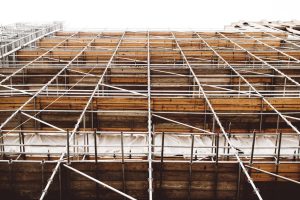Introduction
In the world of construction, the equilibrium between costs and project feasibility is of paramount importance. The month of September bore witness to a substantial and unwelcome development in the form of a pronounced upswing in construction input costs in the United States. In this article, we delve into the underlying factors that have contributed to this increase in input costs and the potential implications for the construction industry.
Understanding the Surge
This section provides a comprehensive understanding of the factors responsible for the increase in construction input costs.
Escalating Raw Material Costs
The primary impetus behind the rise in construction input costs in September is the significant escalation in raw material prices. Critical construction materials such as steel, lumber, and concrete have undergone substantial price hikes, primarily attributed to supply chain disruptions and heightened demand.
Soaring Labor Expenses
Labor costs represent another substantial factor contributing to the surge. The amalgamation of labor shortages and escalating wages has led to an elevation in labor expenses within the construction industry.
Impact on the Construction Industry
This section delves into the potential repercussions of mounting construction input costs for the industry at large.
Comparative Table: Impact of Rising Input Costs
| Impact on Construction Industry | Description |
|---|---|
| Project Delays | Delays in construction schedules due to budget revisions. |
| Cost Overruns | Projects potentially becoming financially burdensome. |
| Home Prices on the Rise | Higher home prices affecting buyer demand. |
| Value Engineering | Reevaluating project designs and materials for savings. |
| Negotiations and Contract Revisions | Reevaluating contract terms to share the financial burden. |
Strategies for Adapting
This section explores the strategies that the construction industry may employ to adapt to the escalating input costs.
Embracing Value Engineering
One approach to mitigate the impact of higher costs is the incorporation of value engineering. This strategy entails a comprehensive reassessment of project designs and materials to pinpoint opportunities for cost savings without compromising on quality.

Engaging in Negotiations and Contract Revisions
Contractors and subcontractors may find it imperative to initiate negotiations aimed at the reevaluation of terms and contracts in response to the escalating input costs. This collaborative approach has the potential to more equitably distribute the financial burden among all stakeholders.
Looking to the Future
As the construction industry grapples with mounting input costs, the path forward remains enshrouded in uncertainty.
Resilience in the Face of Challenges
The industry has consistently showcased remarkable resilience when confronted with adversities. It is highly likely to adapt and explore innovative solutions to offset the mounting costs and guarantee the continued viability of projects.
Policy Implications
Government policies, such as trade agreements and regulations, exert a substantial influence on construction input costs. Future policy decisions may either exacerbate or alleviate the situation, making them a pivotal consideration for industry stakeholders.
Conclusion
The surge in construction input costs in September poses a formidable challenge to the construction industry. The escalating prices of raw materials and the surge in labor expenses can potentially result in project delays, cost overruns, and an increase in home prices for prospective buyers. To navigate these uncharted waters, the industry will need to employ coping strategies like value engineering and contract negotiations.
While the road ahead remains uncertain, the construction sector has consistently displayed its adaptability and capacity for innovation in the face of adversity. Future policy decisions and market dynamics will play a pivotal role in shaping the construction industry’s response to these escalating input costs.



